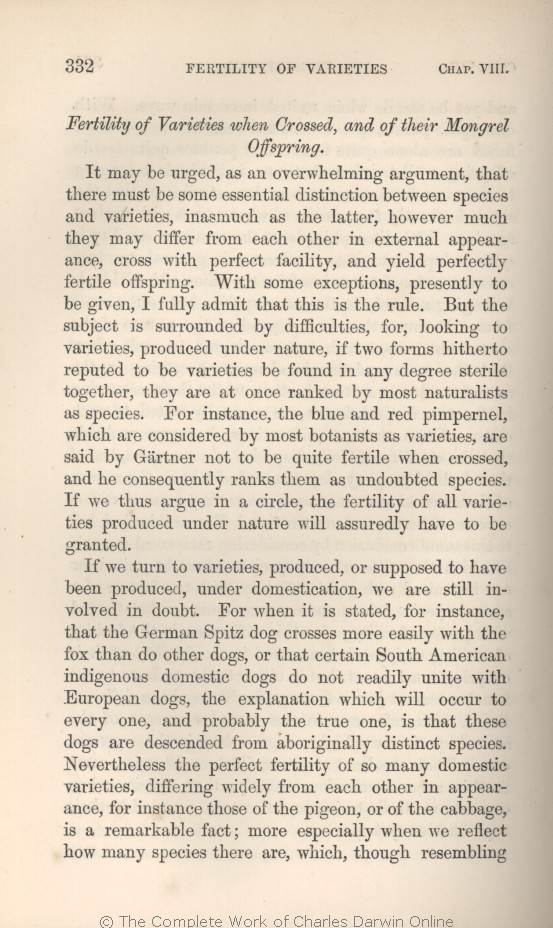Fertility
|
Fertility
1866 1869 1872 | |
Fertility
1859 1860 1861 |
|
of
1866 1869 1872 | |
of
1859 1860 1861 |
|
Varieties
1866 1869 1872 | |
Varieties
1859 1860 1861 |
|
when
1866 1869 1872 | |
when
1859 1860 1861 |
|
Crossed,
1866 1869 |
|
crossed,
1859 |
|
crossed
,
1860 1861 |
|
Crossed
,
1872 |
|
and
1866 1869 1872 | |
and
1859 1860 1861 |
|
of
1866 1869 1872 | |
of
1859 1860 1861 |
|
their
1866 1869 1872 | |
their
1859 1860 1861 |
|
Mongrel
1866 1869 1872 | |
Mongrel
1859 1860 1861 |
|
Offspring
. 1866 1869 |
|
offspring
.—
1859 1860 1861 |
|
Offspring
,
not universal
. 1872 |
|
It may be urged, as
an overwhelming | an overwhelming 1869 1872 |
| a most forcible 1859 1860 1861 1866 |
| argument, 1860 1861 1866 1869 1872 | | argu- ment, 1859 |
| OMIT 1869 1872 |
| and that there must be some error in all the foregoing remarks, 1859 1860 1861 1866 |
| the latter, 1869 1872 | | varieties, 1859 1860 1861 1866 |
| the 1866 1869 1872 |
| very generally the 1861 |
| But the subject is surrounded by difficulties, for, looking to varieties, produced under nature, if two forms hitherto reputed to be varieties be found in any degree sterile together, they are at once ranked by most naturalists as species. 1869 |
| I fully admit that this is almost invariably the case. 1859 1860 |
| 1 blocks not present in 1869; present in 1859 1860 1861 1866 1872 | | But if we look
to varieties produced under nature, we are immediately involved in hopeless difficulties; for
if two hitherto reputed
varieties be found in any degree sterile together, they are at once ranked by most naturalists as species.
|
| OMIT 1866 1869 1872 |
| the primrose and cowslip, 1859 1860 1861 |
| most 1866 1869 1872 |
| many of our best 1859 1860 1861 |
| not 1859 1860 1861 1866 1869 | not 1872 |
| fertile 1859 1860 1861 1866 1869 | | sterile 1872 |
|
|
If we turn to varieties, produced, or supposed to have been produced, under domestication, we are still
involved | involved 1859 1860 1861 1869 1872 | | in- volved 1866 |
| doubt. 1859 1860 1861 1866 1869 | | some doubt. 1872 |
| the German Spitz dog crosses more easily with the fox than do other dogs, or that 1866 1869 |
| the German Spitz dog unites more easily than other dogs with foxes, or that 1859 1860 1861 |
| OMIT 1872 |
| unite 1866 1869 1872 | | cross 1859 1860 1861 |
| these dogs are 1869 |
| these dogs have 1859 1860 1861 1866 |
| they are 1872 |
| ..... 1866 1869 1872 | | several 1859 1860 1861 |
| varieties, 1859 1860 1861 1866 1869 | | races, 1872 |
| those of 1866 1869 1872 | | of 1859 1860 1861 |
| pigeon, 1869 1872 | | pigeon 1859 1860 1861 1866 |
| of 1859 1860 1861 1869 1872 | of 1866 |
|









